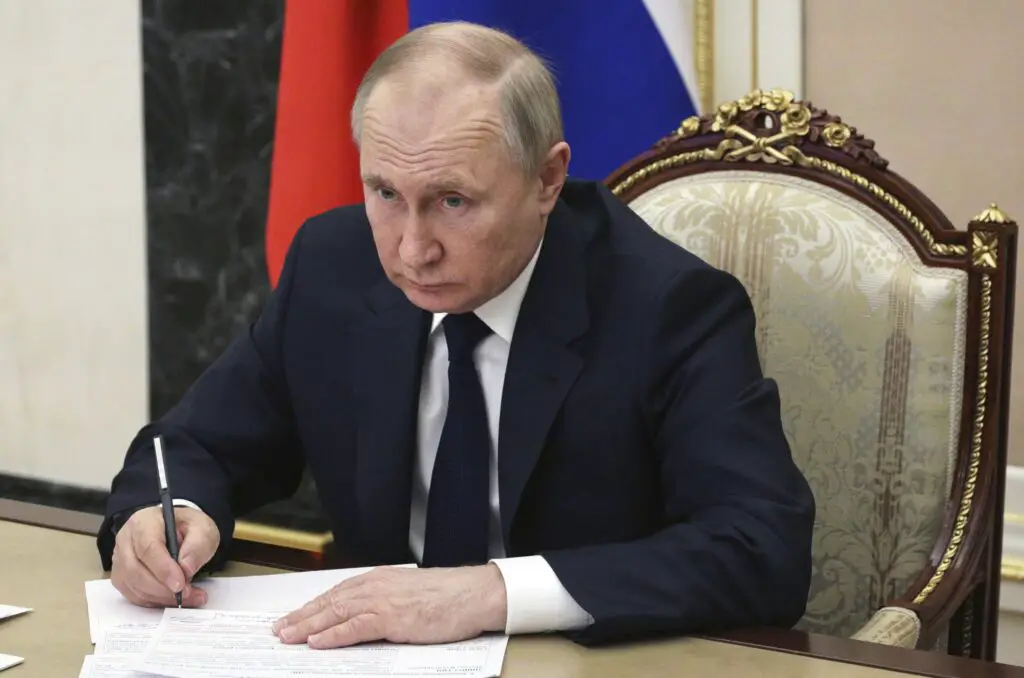The geopolitical landscape has once again been dominated by echoes reminiscent of the Cold War era, as Russia announces plans for tactical nuclear weapon drills near Ukraine. This move comes in direct response to perceived threats from Western officials, igniting a global discourse on nuclear strategy and diplomatic tensions.
Tactical Nuclear Weapons: A Dangerous Game
Russia’s decision to simulate the use of tactical nuclear weapons follows recent provocations from Western nations. Kremlin spokesman Dmitry Peskov cited remarks by French President Emmanuel Macron and former British Foreign Secretary David Cameron as triggers for this “new round of escalation of tension.” Macron’s openness to deploying French troops at Kyiv’s request and Cameron’s assertion of Ukraine’s right to use British-supplied weapons on Russian soil have been interpreted by Russia as direct confrontations.
Tactical nuclear weapons, unlike their strategic counterparts, are designed for battlefield use, aiming to obliterate specific targets without extensive radioactive fallout. These drills, as announced, will involve air, naval, and missile forces, focusing on the deployment and operation of these smaller-yield nuclear assets.

Western Responses and the Specter of Escalation
The announcement has been met with stern criticism from NATO and individual Western countries. NATO spokesperson Farah Dakhlallah labeled the exercises “dangerous and irresponsible,” highlighting the alliance’s vigilance in such precarious times. Meanwhile, European leaders, including Macron and European Commission President Ursula von der Leyen, have urged global powers like China to help de-escalate the situation.
This nuclear saber-rattling by Russia not only serves as a strategic warning but also coincides with significant political events, including President Vladimir Putin’s inauguration for a fifth term. Despite the ceremony’s significance, several European nations have chosen not to send their envoys, signaling a stark diplomatic divide.
The Broader Implications of Nuclear Drills
The practice of deploying tactical nuclear weapons is a fraught one, with immense potential consequences. These weapons, while limited in scope compared to strategic nuclear arsenals, still pose a significant threat due to their destructive power and the psychological impact of nuclear warfare. The drills underscore Russia’s readiness to escalate its military response to what it perceives as aggressive encroachments by NATO-aligned nations.
The Global Stance and Strategic Calculations
Globally, the response to Russia’s maneuvers has been one of caution and concern. The United States, while noting no immediate change in Russia’s nuclear posture, recognizes the serious implications of such threats. With Russia and the US holding the majority of the world’s nuclear arsenal, the strategic calculations of both nations are under intense scrutiny.
As the world watches closely, the implications of Russia’s tactical nuclear exercises extend far beyond the immediate military strategies. They touch on the very essence of international diplomacy, the long-standing nuclear non-progression norms, and the overarching desire to avoid a return to the darkest days of the Cold War.
Conclusion: A Call for Strategic Patience and Diplomacy
As tensions simmer, the international community must advocate for restraint and open diplomatic channels to mitigate the risk of nuclear escalation. The situation demands a nuanced understanding of nuclear strategy, the responsibilities of nuclear-armed states, and the global ramifications of such high-stakes military posturing.
In conclusion, while the world grapples with numerous challenges, the specter of nuclear conflict, especially at a tactical level, calls for a renewed commitment to peace, stability, and the prevention of a nuclear catastrophe. The ongoing situation serves as a stark reminder of the delicate balance between national security and global peace efforts.
This comprehensive exploration of the current Russo-Ukrainian tensions and the nuclear dimensions underscores the urgent need for informed dialogue and proactive conflict resolution strategies. As history has shown, the path to nuclear de-escalation is fraught with challenges, yet it remains the only path worth pursuing for the sake of global security and future generations.